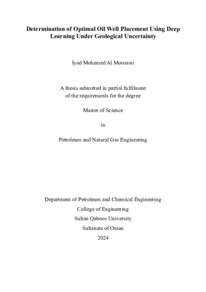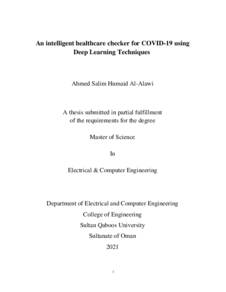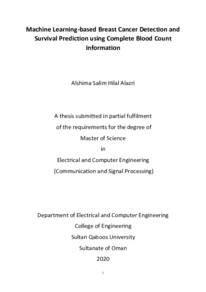Deep learning for electricity demand forecasting in Oman : a comparative study of LSTM and econometric models.
المصدر
Master's thesis
الدولة
Oman
مكان النشر
Muscat
الناشر
Sultan Qaboos University
ميلادي
2024
اللغة
الأنجليزية
نوع الرسالة الجامعية
Master's thesis
الملخص الإنجليزي
Electricity plays a pivotal role in powering economic growth and it is indispensable in our
everyday activities. As a result, the demand for electric power is increasing at a rapid pace.
Accurate electricity demand prediction is crucial for ensuring reliable energy supply,
optimizing resource allocation, and facilitating infrastructure planning. Machine learning
techniques have gained prominence in the field of electricity demand forecasting because
of their ability to capture complex patterns and improve predictive accuracy. Sultanate of
Oman has witnessed substantial growth in electricity consumption, driven by population
expansion and rapid industrialization. As the demand for electricity continues to surge, it
becomes imperative to harness advanced forecasting methods to anticipate future
electricity requirements accurately.
This study examines the efficacy of deep learning, especially Long Short-Term Memory
(LSTM) neural networks, in comparison to econometric models like ARIMA and Linear
Regression for forecasting electricity demand in Oman. The research methodology
involves data preprocessing, feature selection using the Granger Causality test, and model
evaluation using metrics such as Mean Squared Error (MSE), Root Mean Squared Error
(RMSE), Mean Absolute Error (MAE), and R-squared (R²).
Our findings demonstrate that LSTM models outperform the traditional econometric
approaches, demonstrating their exceptional capability to understand the intricate patterns
of electricity usage. Specifically, the LSTM model achieved the lowest Mean Squared
Error (MSE) of 0.0005, Root Mean Squared Error (RMSE) of 0.0244, and Mean Absolute
Error (MAE) of 0.0179, with an R² value of 0.983, indicating a nearly perfect explanation
of the variability observed in the testing dataset.
An extensive analysis of how weather conditions affect electricity demand reveals that
factors such as temperature, wind speed, humidity, and the atmospheric pressure play a
crucial role in predicting demand. Notably, rainfall emerges as an insignificant predictor
in this context. Consequently, these results endorse the integration of sophisticated deep
learning methods into the strategic energy planning and policy-making processes to
support Oman's economic development based on pivotal weather-related variables.
قالب العنصر
الرسائل والأطروحات الجامعية



